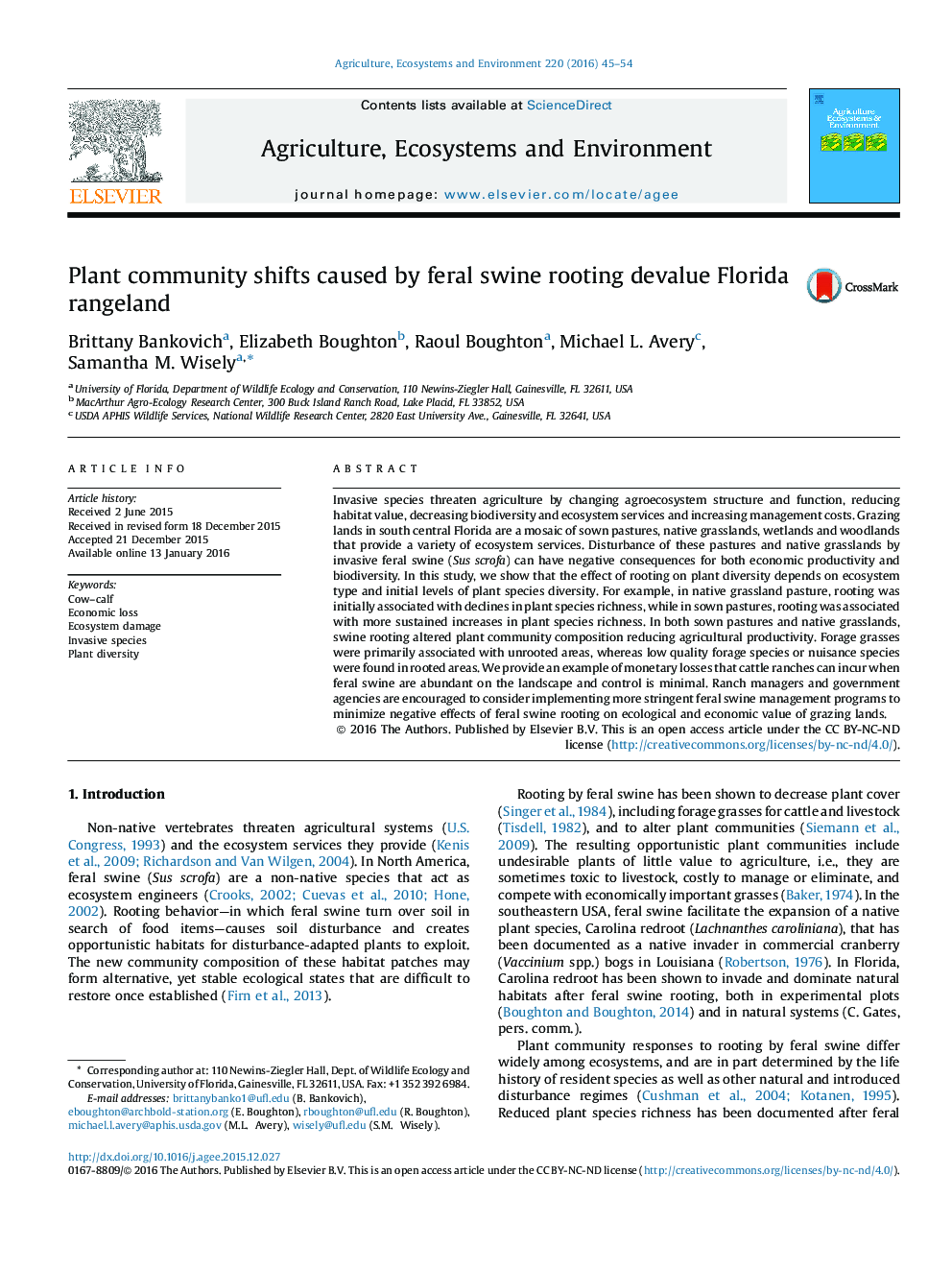| Article ID | Journal | Published Year | Pages | File Type |
|---|---|---|---|---|
| 8487480 | Agriculture, Ecosystems & Environment | 2016 | 10 Pages |
Abstract
Invasive species threaten agriculture by changing agroecosystem structure and function, reducing habitat value, decreasing biodiversity and ecosystem services and increasing management costs. Grazing lands in south central Florida are a mosaic of sown pastures, native grasslands, wetlands and woodlands that provide a variety of ecosystem services. Disturbance of these pastures and native grasslands by invasive feral swine (Sus scrofa) can have negative consequences for both economic productivity and biodiversity. In this study, we show that the effect of rooting on plant diversity depends on ecosystem type and initial levels of plant species diversity. For example, in native grassland pasture, rooting was initially associated with declines in plant species richness, while in sown pastures, rooting was associated with more sustained increases in plant species richness. In both sown pastures and native grasslands, swine rooting altered plant community composition reducing agricultural productivity. Forage grasses were primarily associated with unrooted areas, whereas low quality forage species or nuisance species were found in rooted areas. We provide an example of monetary losses that cattle ranches can incur when feral swine are abundant on the landscape and control is minimal. Ranch managers and government agencies are encouraged to consider implementing more stringent feral swine management programs to minimize negative effects of feral swine rooting on ecological and economic value of grazing lands.
Related Topics
Life Sciences
Agricultural and Biological Sciences
Agronomy and Crop Science
Authors
Brittany Bankovich, Elizabeth Boughton, Raoul Boughton, Michael L. Avery, Samantha M. Wisely,
